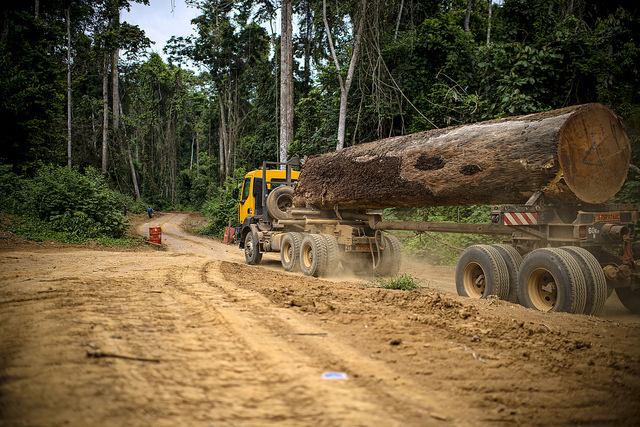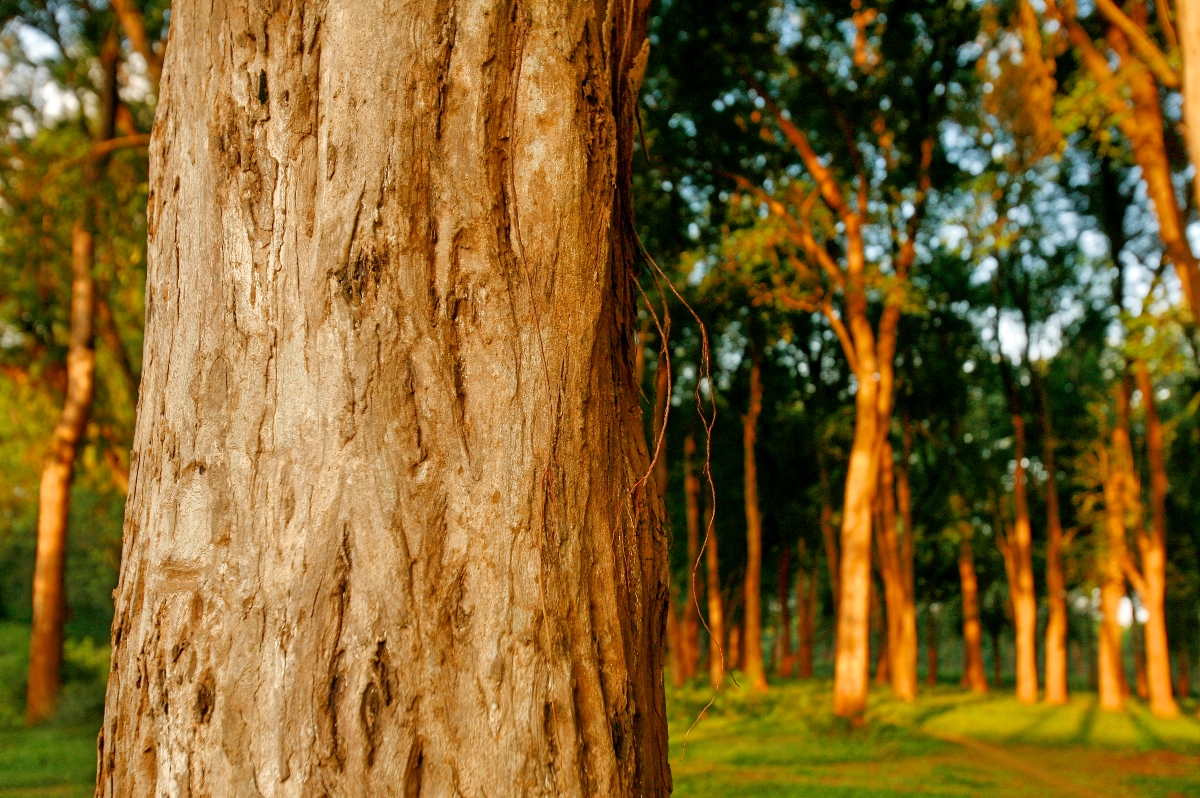Natural forests support life in complex ways. Forest ecosystems are habitats for animals and humans, they regulate air quality, temperature and carbon cycling, protect soils and water quality, help mitigate climate change, and much more.
‘Planted forests’, “composed of trees established through planting and/or through deliberate seeding of native or introduced species”, rarely manage to fully replicate the rich ecosystems of natural forests. But can they provide benefits for the environment, and for human well-being?
New research led by the Center for International Forestry Research (CIFOR) aims to provide an improved basis for assessing the contribution of planted forests to ecosystem services. In a recent paper in the journal Ecosystem Services, researchers from CIFOR and the University of Melbourne propose a framework for assessing the well-being benefits of planted forests.
Their findings show that plantations can contribute ecosystem services, and that it is possible to assess these benefits using a simple approach. This will enable a better understanding of the capacity of different types of planted forests to provide services such as timber, water quality, carbon sequestration or habitat benefits, and their contribution to forest landscape restoration goals.
‘PLANTED FORESTS’?
Himlal Baral, the lead author of the paper, says the term ‘planted forests’ is not without its critics. The broad definition by the Food and Agriculture Organization of the United Nations (FAO), as given above, encompasses everything from ecological restoration efforts to industrial plantations.
Critics are quick to point out that “plantations are not forests”, and often label them “green deserts” because they are perceived to provide few benefits to conservation of plant or animal species.
However, plantations of the right species in the right places can provide multiple benefits, not just timber. It depends on where they are in the landscape, what they replace, how they are managed, and so on.
But Baral says the negative impacts of plantations represent failures in policy, planning, management and community engagement, and are not direct consequences of plantations themselves.
“Plantations of the right species in the right places can provide multiple benefits, not just timber. It depends on where they are in the landscape, what they replace, how they are managed, and so on,’” he says.
While timber plantations often have a bad reputation, he adds, their effects are more limited than agriculture or infrastructure development as drivers of natural forest loss in tropical and sub-tropical regions.
They also have the potential to provide greater benefits than food crops and other land uses to human and environmental well-being in the long term, including by restoring degraded forest landscapes, according to the research.
MEASURING ECOSYSTEM SERVICES
The commonly cited TEEB (The Economics of Ecosystems and Biodiversity) definition of ecosystem services is “the direct and indirect contributions of ecosystems to human well-being”. These are further divided into provisioning, regulating, supporting (or habitat) and cultural services.
Forest ecosystems provide food, raw materials and medicines. They regulate clean air and water, support habitats for a diverse range of species, and hold spiritual and recreational values for mental and physical health.
So can these services be provided by planted forests, and to what extent?
In their new paper, Baral and colleagues aim to find answers by introducing a framework for quantifying and assessing the ecosystem services of natural and planted forests.
Using common classification systems, such as those used in the TEEB study, the framework recommends a step-by-step process for identifying beneficiaries, determining the appropriate assessment tools, and analyzing, synthesizing and communicating the results to relevant stakeholders.
The process is designed for increased transparency, participation and effectiveness in decision-making on policy, management and engagement in relation to planted forests.
BETTER PLANNING
In theory, the paper finds that planted forests can be better than agriculture and pasture for almost all ecosystem services measured. In comparison to natural forests, planted forests are generally higher for timber production and carbon sequestration.
The framework also takes into account the public and private aspects of planted forests, and what this means for access to ecosystem services. For example, timber and other ‘excludable’ forest products may not be as readily accessible to local populations from a planted forest as from a natural forest, while ‘non-excludable’ services such as clean air and water are accessible to all.
The ecosystem ‘dis-services’ of some planted forests are not considered in the assessment framework, as the authors consider these to be the results of poor planning and design. In testing the framework, factoring in negative impacts in the assessment balance sheet will be important to improve planning and decision-making for plantation investments.
Baral hopes that the research will support improved understanding and management of planted forests to the benefit of people and the environment.
“By increasing the area of plantations for timber production on degraded lands, we can reduce the pressure to clear natural forests,” Baral says.
“The human population is increasing and people are becoming wealthier. Demand for forest products is increasing – you need somewhere to satisfy those demands,” he says. “And if you don’t have plantations, you need to harvest natural forests more extensively.”
We want you to share Forests News content, which is licensed under Creative Commons Attribution-NonCommercial-ShareAlike 4.0 International (CC BY-NC-SA 4.0). This means you are free to redistribute our material for non-commercial purposes. All we ask is that you give Forests News appropriate credit and link to the original Forests News content, indicate if changes were made, and distribute your contributions under the same Creative Commons license. You must notify Forests News if you repost, reprint or reuse our materials by contacting forestsnews@cifor-icraf.org.



